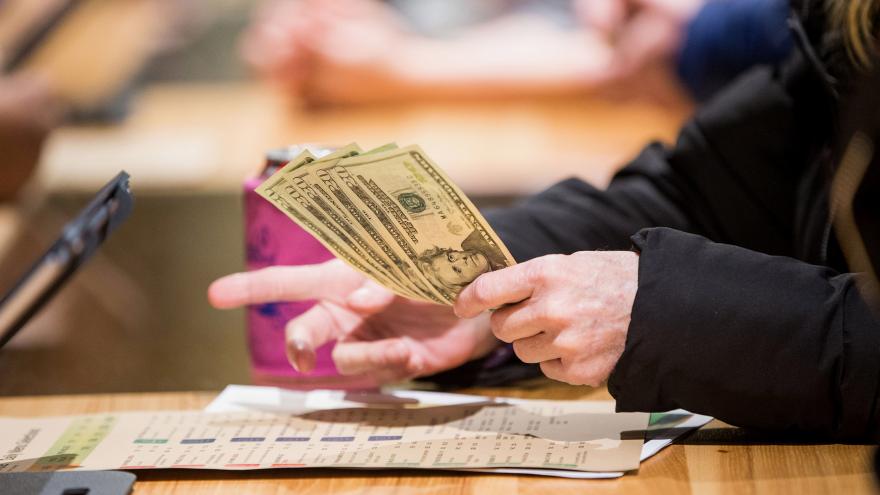What is key to drive the USD dollar?
Forecasts for a weaker US dollar through 2024 rest heavily not just on the Fed starting an easing cycle, but also that this cycle either causes, or is consistent with, a rally in asset prices.

What US dollar bears need to see in 2024 is a sort of Goldilocks scenario in which the Fed cuts rates
>> How inflation affects currencies
While we think Fed rate cuts next year are very likely, the performance of asset prices could yet spoil the party for the US dollar bears.
Recently we’ve seen speculation heat up that central banks will start to cut rates earlier than previously supposed and arguably sooner than most central bankers might be thinking about at the moment. This has been particularly true in the euro zone given the weakness of the economy and the sharp fall in inflation. But elsewhere as well, such as the US, speculation is growing that the Fed’s definition of a “substantial” period of restrictive policy might mean no longer than the middle of 2024.
Financial markets usually run ahead of the central banks in this sort of setting and often policymakers have a tough job hauling back such speculation. It does not look as if it is going to be any different this time. And even if the Fed starts to cut rates at a later stage than major European central banks, it still seems probable that this environment will produce a weaker dollar. It is likely to do so because investors assume that rate cuts support asset prices, support risk-taking, and weigh on assets that are deemed to be ‘safe’, such as the dollar. This shows that it is not just the rate cuts from the Fed that are necessary for the dollar to fall, but also strength in bonds and stocks. And it is this latter component that has to be in question.
History does seem to show that rate cuts from the Fed more often than not produce strength in asset prices. And here we mean stocks as it is almost a given that rate cuts will lift bond prices, particularly at the front end of the curve. If we look back at the Fed’s easing cycles from the mid-1970s, the S&P 500 has risen by an average of 3.5% in the six months following the first cut. That might not sound like much but there’s two points to make here.
The first is that asset price rallies often begin before the first cut is announced as the market starts to aggressively price in the prospect of an imminent rate reduction. And there may be a “sell the fact” reaction when the cuts actually start.
>> Will the US dollar fall as rates are cut?
A second point is that the post-rate-cut performance of stocks has been weighed down on many occasions by the fact that the cuts have occurred in the context of some sort of disaster, such as the global financial crisis or COVID. If we were to ignore the easing cycles that have taken place in such crisis scenarios, we would find that the post-cut stock market performance would be even better. Hence, it seems that there is a decent chance that asset prices will rally as the Fed – and other central banks – move into an easing cycle, provided this cycle is not the consequence of some sort of catastrophe. But is this a reasonable assumption?
Quite clearly we don’t know whether some sort of ‘unknown, unknown’ crisis, like a pandemic, could happen again and force central banks to cut rates. But leaving this aside, there is still the very real possibility of a ‘known, unknown’ crisis if the significant tightening of policy to date provokes deep recessions, debt crises and more because the Fed and others have overtightened.
What’s more, if you look at forecasts for how equity prices are likely to perform in the rate-easing environment, it seems that there’s a good deal of caution amongst analysts. Should this caution prove warranted then it may be difficult to envisage a weaker dollar even as the Fed starts to cut. And the times when the US dollar has actually rallied the hardest are when it has cut rates the fastest, because it is responding to a crisis.
So, what US dollar bears need to see in 2024 is a sort of Goldilocks scenario in which the Fed cuts rates, but only modestly, as deep and rapid cuts would more likely be associated with a catastrophe – and strength in the greenback. From the Standard Bank’s perspective, it does lean towards the Goldilocks view, and hence a weaker dollar, but it doesn’t doubt that it could be quite a close run thing.








